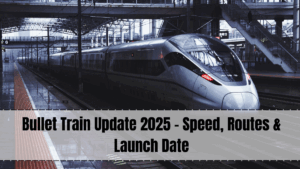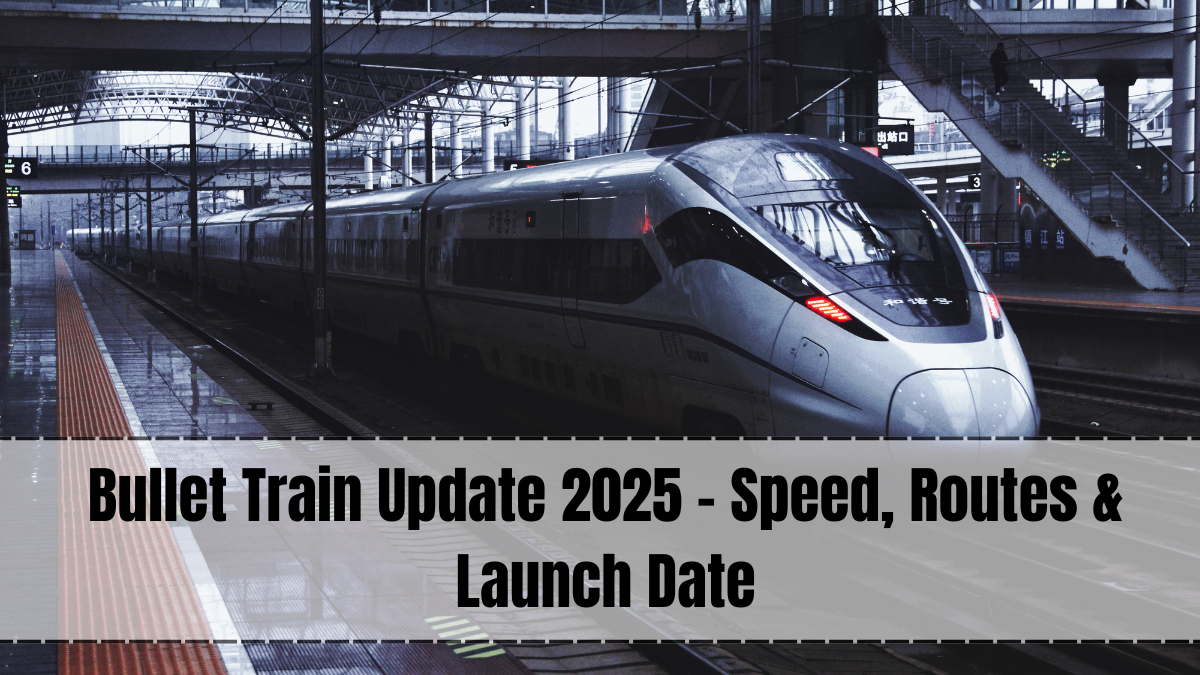The bullet train update 2025 marks a major milestone in India’s high-speed rail journey. The Mumbai–Ahmedabad bullet train project, being implemented by the National High Speed Rail Corporation Limited (NHSRCL), is set to revolutionize rail travel in the country with world-class speed, safety, and passenger comfort. Backed by advanced Japanese Shinkansen technology, the project aims to significantly reduce travel time and promote economic growth along the corridor.

Table of Contents
Project Highlights in 2025

-
High-Speed Performance: Designed to run at speeds up to 320 km/h
-
Travel Time: Journey between Mumbai and Ahmedabad reduced to about 2 hours
-
Stations Covered: Multiple stations including Mumbai, Thane, Surat, Vadodara, and Ahmedabad
-
Technology: Japanese E5 Series Shinkansen technology for maximum efficiency and safety
-
Environmental Focus: Energy-efficient systems and minimal carbon footprint design
Routes & Network Expansion
While the main focus remains on the Mumbai–Ahmedabad route, studies and preliminary planning are ongoing for future high-speed rail corridors, including:
-
Delhi–Varanasi corridor
-
Chennai–Mysuru corridor
-
Delhi–Amritsar corridor
The success of the first corridor is expected to set the foundation for an expansive high-speed network across India.
Infrastructure & Construction Updates
-
Viaducts & Bridges: Significant progress in elevated track construction across Gujarat and Maharashtra
-
Stations: State-of-the-art station designs with modern amenities, multi-modal connectivity, and accessibility features
-
Training Facilities: Dedicated training centers for Indian engineers and crew in high-speed rail technology
-
Tunnel Construction: Ongoing work on India’s first undersea rail tunnel near Mumbai
Benefits for Passengers & Economy
The bullet train update 2025 brings:
-
Faster travel, reducing long-distance journey times
-
Improved passenger comfort with spacious seating, onboard services, and safety features
-
Job creation during construction and operation phases
-
Boost to tourism, business connectivity, and regional development
Launch Timeline
The government and NHSRCL are committed to meeting revised project timelines, with trial runs expected before full-scale commercial operations. The goal is to begin phased operations at the earliest feasible date while ensuring strict quality and safety standards.
FAQs
What is the maximum speed of the bullet train?
Up to 320 km/h, with average operational speeds of around 250 km/h.
Will ticket prices be affordable?
Ticket pricing is planned to be competitive with air travel for the same route.
Is the bullet train eco-friendly?
Yes, it uses energy-efficient electric systems with minimal carbon emissions.
How many passengers can the train carry?
Each trainset can carry around 750–1,200 passengers depending on configuration.
Will the project expand to other states?
Yes, other high-speed rail corridors are under planning for future implementation.
Click here to know more.






